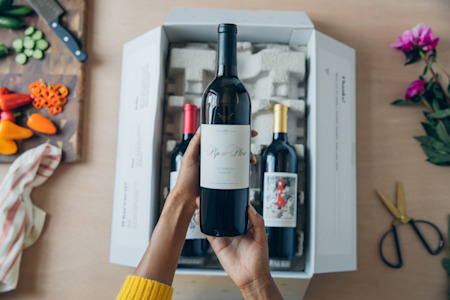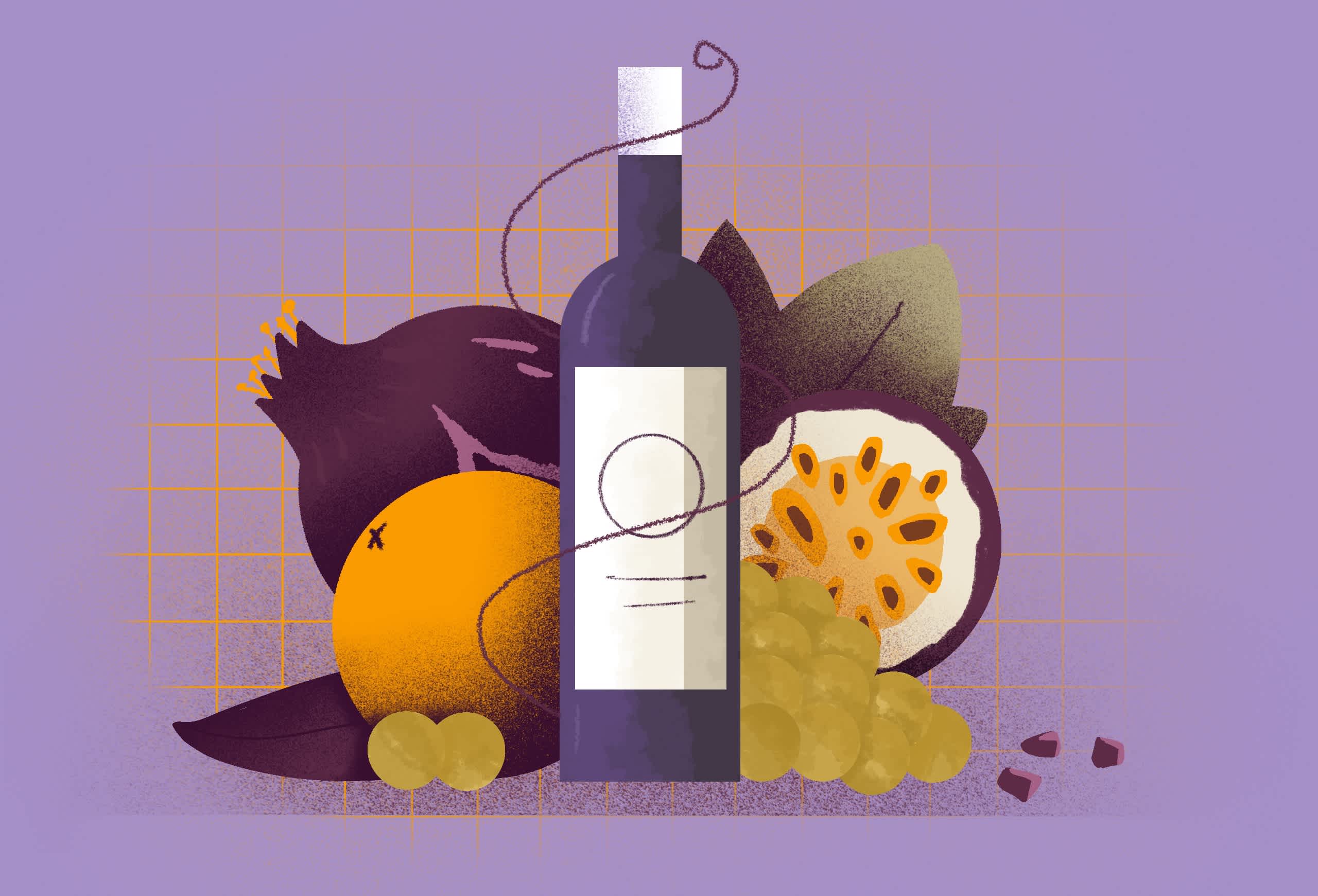Acidity In Wine
Learn about the importance of acidity in wine and how to identify it
When you taste a crisp white wine and feel refreshed, that's a result of the naturally occurring acids in wine. Having the correct acidity is one of the key components in producing a balanced wine.
We've discussed elsewhere that balance is the number one metric in determining the quality of a wine. When the alcohol, acidity, tannin, sweetness, and fruit complement one another the wine is considered to be very good. The interplay between the five components is what makes a wine unique and can give us a framework to assess quality. When you taste a balanced wine you may find it difficult to call out a single component because they are so integrated.
Acidity originally comes from grapes, but also plays an important role in the cellar. It has a direct influence on the color and taste of a wine and protects from bacteria throughout winemaking and while aging.
An important step for new wine drinkers is to identify and assess the acidity in any given wine. Below is a handy guide with an explanation on how winemakers decide what to do in the winemaking process.

Take Our Quiz Today
Get award-winning delicious wines from all over the world shipped straight to your door. Take the quiz to get the perfect pairings for your holiday season.
Take The Quiz TodayIN THIS ARTICLE:
Want personalized wines?
Get your first box of wines for $44.95 + free shipping.

How to Assess Acidity in Wine
When formally tasting wine the term acidity refers to certain textures that can present themselves: freshness, tartness, or sourness. These notes are integral to making a wine taste refreshing and to countering the other four main wine components needed for balance: alcohol, tannin, sweetness, and fruit.
Acidity adds tartness, and can make your mouth pucker as if you bit into a lemon. The natural acids in a glass of wine tickle your tongue and leave your mouth watering as compared to the effects of tannins that will dry out your gums.
It is also essential to balance sweetness, which is why almost all sweet wines have incredibly high acidity. Too much acidity and wine will taste like a lemon drop—just too sour—too little acidity and it will be a weak tasting wine, often referred to as "flabby".
Red wines and white wines both need acidity, and the expected acid levels depend on the grape and the region that they come from. If you are at a wine tasting assessing a glass of wine the acidity can tell you a few things. Higher acid wines generally come from cooler regions, so if a wine has medium to high acidity and lower sugar it most likely grew in a cooler wine region. That could be a region that gets less sunlight or even a warmer region that experiences cooling influences from fog or nearby oceans. If the wine you are tasting is low acid, more notably sweet, and full of fruit flavor you can narrow it down to a warm location with a long growing season.
While acidity is generally associated with freshness too much oxygen in the winemaking process can lead to volatile acidity (VA). This is a byproduct that is generally a bad thing. It can make a wine taste like nail polish remover, but in small doses it can lend some complexity to a red wine with raspberry and cherry notes.
The Science of Acidity in Wine
Wine Grapes have three primary acids that are created naturally in the vineyard: tartaric acid, malic acid, and citric acid. These are the most important acids that drive the winemaking process, but a few other acids can be created or develop in the bottle: acetic acid (essentially vinegar), succinic acid (adds tartness), lactic acid (one result of malolactic fermentation that can change the texture of a wine), among others.
The major types of acid in wine and their functions:
Tartaric Acid - This acid comes from the grape itself, and is integral in preserving acidity and color through the winemaking process. Long term effects of tartaric acid include stabilizing a wine and helping it to resist spoilage. After bottling, tartaric acid can form tartrate crystals seen in the bottom of a wine bottle as sediment. Some view this as a fault, but the crystals are simply a natural byproduct of age and high tartaric acid content and can be decanted out.
Malic Acid - Malic acid is the acid present in a grape that is associated with ripeness. As a grape ripens, the malic acid disappears. It is also unstable and easily affected by lactic acid causing bacteria. If it comes in contact with bacteria and heat it will undergo the process known as malolactic fermentation which changes the texture and flavor profile. One of the easiest examples of malolactic fermentation is found in a buttery California Chardonnay. Lactic acid adds the creamy, buttery mouthfeel to a wine. Compare this style to a crisp and mineral-driven white Burgundy from France or Chablis.
Citric Acid - Present in very small quantities in wine grapes, it is most often added to inexpensive, lower-quality wine to give it a bit more acidity.
To test the overall presence of acid in a wine, winemakers measure the total acidity (also called titratable acidity or TA) using the pH scale. Most wines land between 2.9 and 3.9 on the pH scale and generally the higher the pH, the lower the acidity, and vice versa. That being said it is not foolproof as it is possible for a wine to have a high pH and high acidity. Winemakers must rely on their training and knowledge to produce a high-quality, balanced wine.
Acidity and Winemaking
Acidity first comes from wine grapes and is highest at veraison (when grapes stop growing and start ripening, usually changing color) and falls the longer the grapes are left to ripen. This is why cooler climates typically produce wines with higher acidity (think about Pinot Noir from Oregon and Pinot Noir from Central California—the freshness of the northern wines comes from acidity). Warmer climates produce grapes with higher sugar levels. As sugar levels increase acidity decreases.
Acidity also affects the color of a wine. Red wines with a low pH (lower pH equates to higher acidity) are often a prettier shade of red. Wines from warm climates with a lower pH can be rather dull if they aren't watched very carefully.
Once a winemaker knows what style of wine they would like to produce they can begin the winemaking process. Winemakers in Champagne are generally looking for higher acidity than winemakers in Central California.
Once winemaking starts they can engage in the process of acidification. This means that for juice that needs just a little bit more acidity it can be added in very specific and controlled ways to help balance the final result.
If the presence of lactic acid causing bacteria is detected the winemaker has tools to control it as well. Some wines shine after malolactic fermentation (also written as MLF of Malo). Comparing white wines is the easiest way to see the effects of malolactic fermentation. A buttery Chardonnay has a very different texture than a crisp Pinot Grigio or a sweeter Riesling. Most red wines undergo malolactic fermentation or partial malolactic fermentation. Winemakers can use temperature or sulfur dioxide (which is also a preservative that occurs naturally on grape skins) to inhibit the effects of natural bacteria to the malic acid once the desired texture and balance is achieved.
Throughout this process, a winemaker should be monitoring the acidity levels and making adjustments as necessary. The longer a winemaker waits to make adjustments, the more manipulated a wine will taste, resulting in an unbalanced flavor profile. The best winemakers match the grapes and style of wine to the climate of their region. This could mean lower acidity than a winemaker might prefer, but the resulting wine will be better balanced and more expressive of the varietal and the vineyard.
IN THIS ARTICLE
Want personalized wines?
Get your first box of wines for $44.95 + free shipping.


WinePrint™ by Firstleaf
Are you looking to learn more about your wine preferences? Check out our Wine Print for an in-depth look at your personal tasting profile. Discover your favorite wines, varietals, regions, and tasting notes and get personalized recommendations wherever you are.
Learn More